To water a Cast Iron Plant effectively, provide deep watering to saturate the soil when the top inch feels dry, then allow the soil to fully dry out before watering again, mimicking its preference for moderate to low water conditions.
This guide provides effective watering strategies for cast iron plants, emphasizing the balance of water needed to maintain their health and beauty.
Recognizing the plant’s resilience, it focuses on the specific water requirements, watering frequency, and variables affecting hydration to ensure your cast iron plant remains robust and attractive, catering to both novice and experienced plant enthusiasts.
No products found.
Understanding the Cast Iron Plant’s Watering Needs
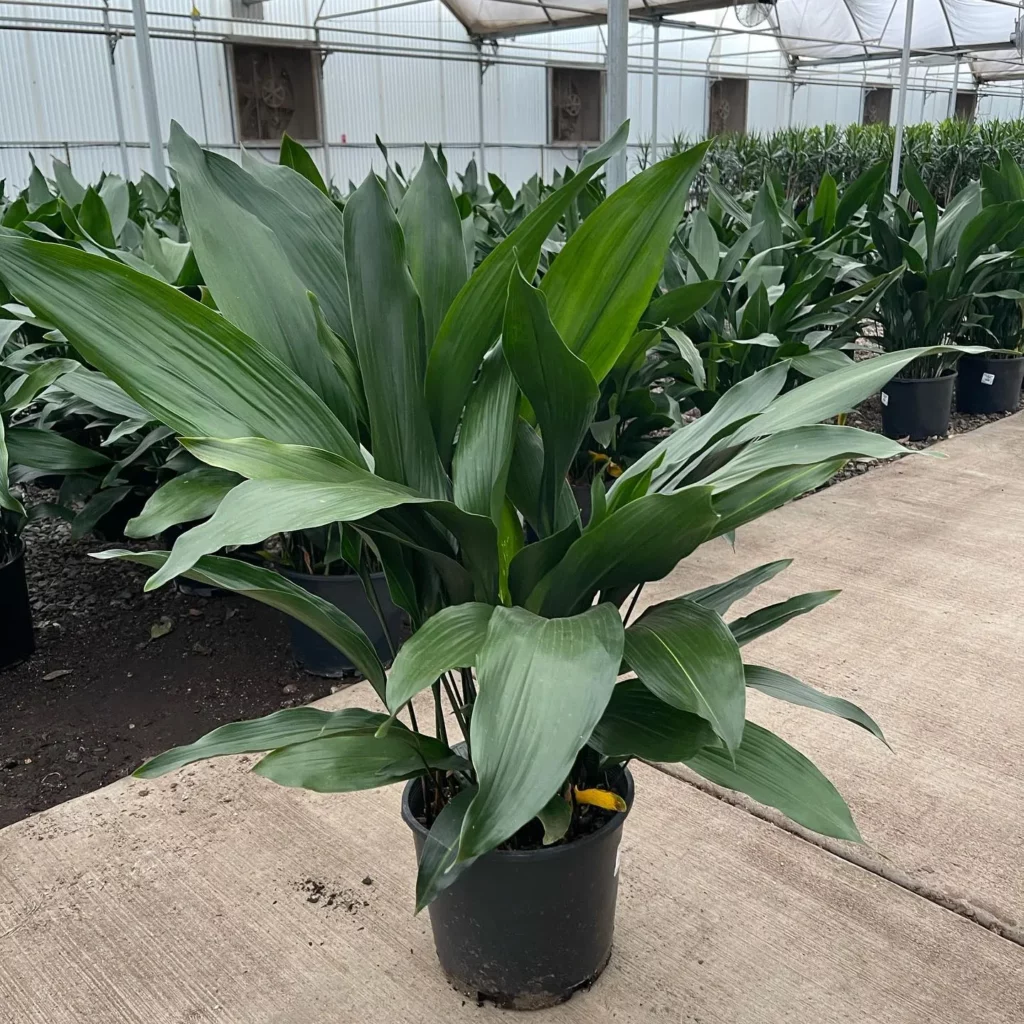
Before we delve into the specific watering techniques for cast iron plants, it’s crucial to understand their unique watering requirements. Proper watering is key to ensuring the health and vitality of these resilient plants.
In this section, I’ll explain how much water your cast iron plant needs, the ideal frequency of watering, and the factors that can influence their water intake.
How much water do cast iron plants require?
Cast iron plants have moderate water needs. They prefer evenly moist soil but are also tolerant of drying out between waterings. Aim to provide enough water to thoroughly moisten the entire root ball without saturating the soil.
What is the ideal frequency of watering?
The ideal frequency of watering for cast iron plants is typically once every 1-2 weeks. However, this can vary depending on factors such as environmental conditions, pot size, and soil type.
It’s important to monitor the moisture levels of the soil and adjust your watering schedule accordingly.
Factors influencing water intake
Several factors can affect the water intake of your cast iron plant:
- Light Levels: Higher light levels may increase the plant’s water requirements as they can dry out the soil faster.
- Temperature: Warmer temperatures increase evaporation, potentially leading to more frequent watering needs.
- Humidity: In drier environments, cast iron plants may require more frequent watering.
- Pot Size: Smaller pots may dry out more quickly and require more frequent watering.
- Soil Type: Well-draining soil allows excess water to drain away, preventing waterlogged conditions that can harm the plant.
Choosing the Right Soil for Your Cast Iron Plant
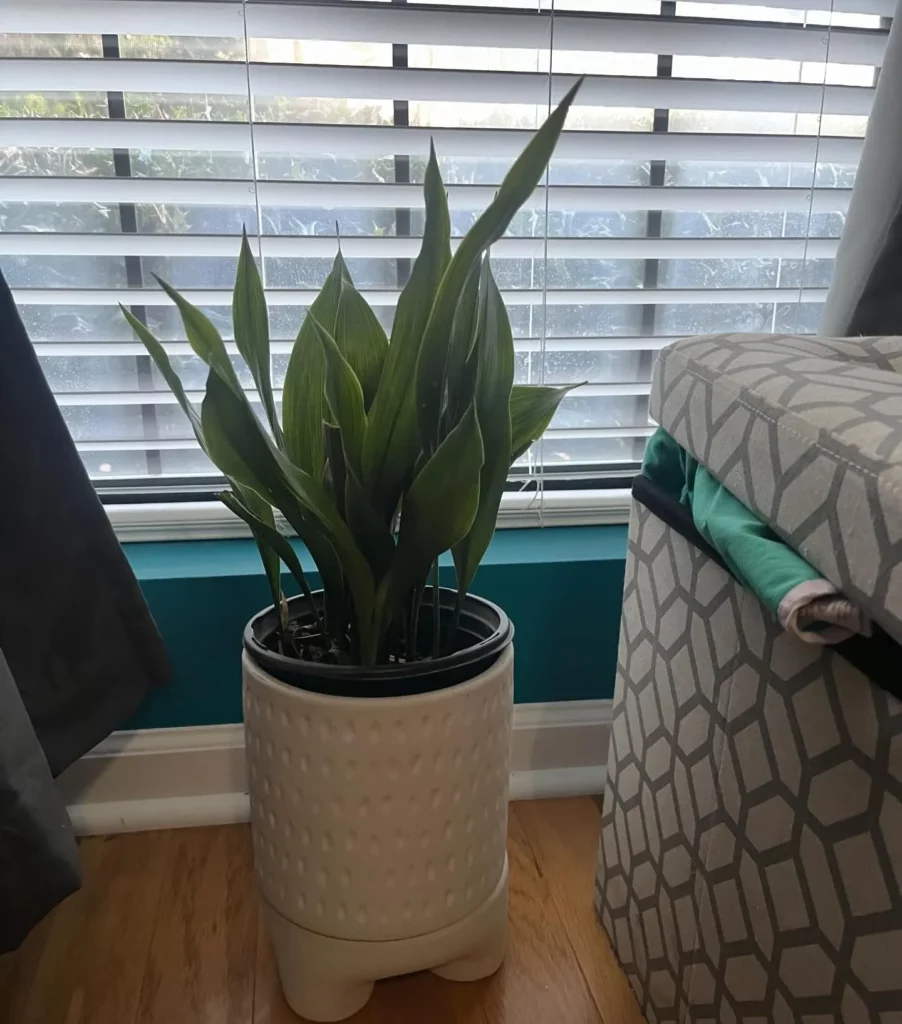
The type of soil you use plays a crucial role in how effectively your cast iron plant retains and absorbs water. When it comes to selecting the right soil mix for your plant, two key factors to consider are proper drainage and moisture retention.
Firstly, let’s talk about drainage. Cast iron plants thrive in well-draining soil that allows excess water to flow through easily. This helps prevent waterlogging and root rot, which can be detrimental to the plant’s health.
To ensure adequate drainage, you can mix in perlite or coarse sand with the soil.
Next, let’s focus on moisture retention. While proper drainage is important, it’s equally crucial for the soil to retain moisture without becoming waterlogged.
To achieve this, you can add organic matter such as peat moss or compost to the soil. These amendments help improve water retention while still allowing excess water to drain away.
Keep in mind that cast iron plants prefer slightly acidic to neutral soil with a pH level between 6.0 and 7.0. If your soil pH is too high or too low, it can affect the plant’s ability to absorb nutrients and water properly.
No products found.
When repotting your cast iron plant, choose a pot with drainage holes to further ensure proper soil drainage. This will help maintain a healthy root system and prevent water from stagnating around the plant’s roots.
Importance of Proper Drainage in Cast Iron Plant Watering
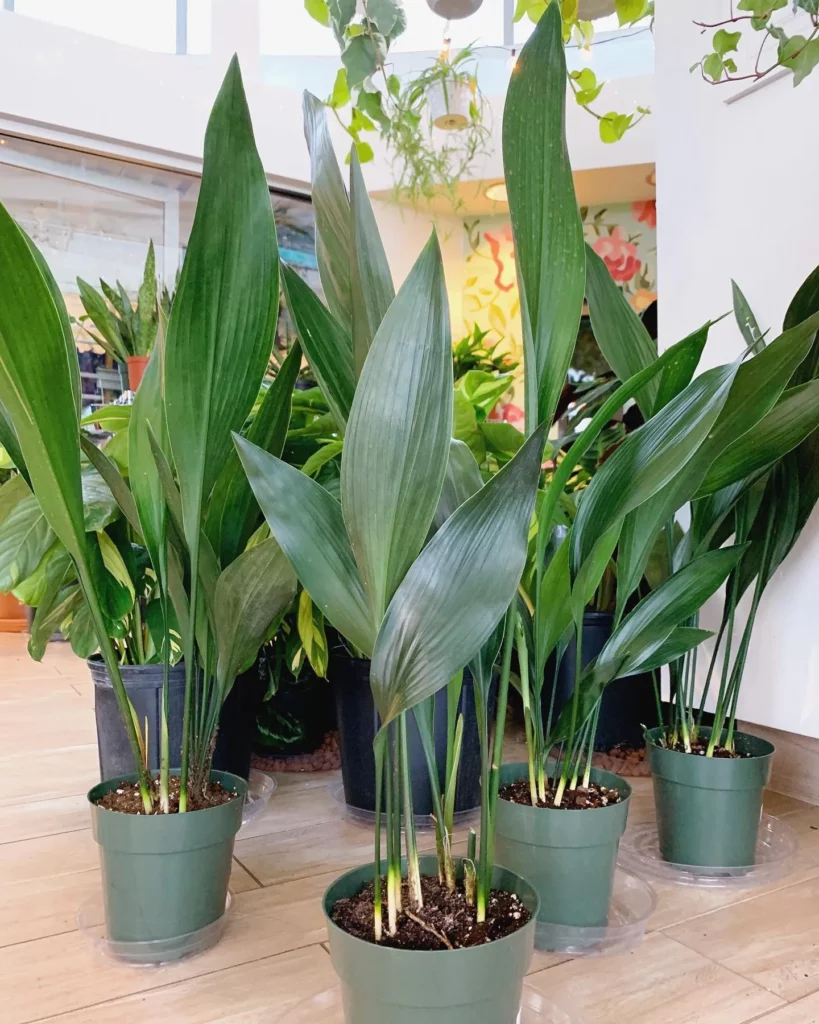
When it comes to caring for your cast iron plants, one crucial factor that often gets overlooked is proper drainage. Having adequate drainage is essential to prevent water-related issues such as root rot and waterlogged soil.
Why is proper drainage so important for your cast iron plants? Well, these plants are native to the forest floors of Japan and Taiwan, where they grow under the dense canopy of trees.
In their natural habitat, the soil is well-draining, allowing excess water to flow away from the roots.
Without proper drainage, water can accumulate around the roots of your cast iron plant, causing them to become waterlogged. This constant excess moisture can lead to root rot, which is a serious problem that can ultimately result in the death of your plant.
To ensure the health and vitality of your cast iron plant, it’s crucial to provide it with an environment that closely mimics its natural habitat. This means creating a well-draining soil structure that allows excess water to flow away from the roots effectively.
Tips for Achieving Proper Drainage
To achieve proper drainage for your cast iron plant, consider the following tips:
- Choose the right pot: Opt for a pot with drainage holes at the bottom to allow excess water to escape.
- Use well-draining soil: A mix of peat moss, perlite, and potting soil can promote proper drainage and prevent water from pooling around the roots.
- Avoid overwatering: Only water your cast iron plant when the top inch of soil feels dry. Overwatering can lead to waterlogged soil and root rot.
- Consider adding drainage materials: Adding rocks or pebbles at the bottom of the pot can provide additional drainage space for excess water.
Watering Technique for Cast Iron Plants
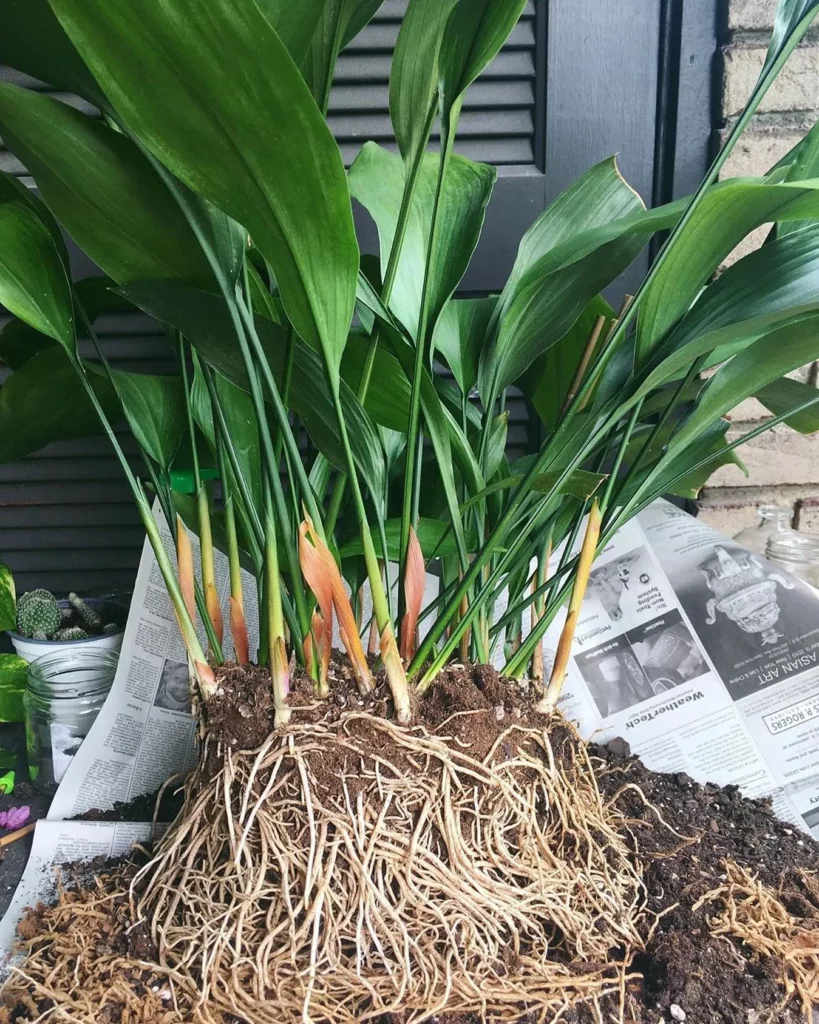
When it comes to watering your cast iron plant, getting the technique right is crucial for their overall health and growth. Here, I’ll guide you through the best practices to ensure your plant receives just the right amount of water it needs.
First and foremost, it’s important to remember that cast iron plants prefer slightly moist soil, but they don’t like to sit in waterlogged conditions. Overwatering can lead to root rot and other issues, so striking the right balance is key.
One effective technique is to water your cast iron plant thoroughly, allowing water to saturate the soil until it reaches the root zone. You can do this by watering slowly and evenly, making sure the water reaches all areas of the pot or the ground soil if it’s planted outdoors.
A good rule of thumb is to water until you see water draining out from the bottom of the pot. This ensures that the roots are adequately hydrated without excess water accumulating in the pot.
If you’re growing your cast iron plant in the ground, water until the soil feels moist about 2-3 inches below the surface.
As for the frequency of watering, it’s important to let the soil dry out slightly between waterings. Cast iron plants are drought-tolerant and can withstand periods of dryness.
Over watering or keeping the soil consistently soggy can cause root rot and other problems.
When determining when to water, it’s best to rely on the moisture level of the soil rather than a set schedule. Before watering, check the soil by inserting your finger about an inch into the soil. If it feels dry at that level, it’s time to water.
If it still feels slightly moist, hold off on watering for a few more days.
Another tip is to water your cast iron plant in the morning. This allows excess moisture to evaporate throughout the day, reducing the risk of fungal diseases and promoting optimal growth.
Avoid watering in the late afternoon or evening, as this can lead to prolonged dampness that encourages the growth of harmful pathogens.
Key Takeaways:
- Water thoroughly, allowing water to reach the root zone.
- Water until you see drainage from the bottom of the pot or until the ground soil feels moist about 2-3 inches below the surface.
- Let the soil dry out slightly between waterings to avoid overwatering.
- Check the moisture level of the soil by inserting your finger about an inch below the surface.
- Water in the morning to allow excess moisture to evaporate throughout the day.
Signs of Underwatering and Overwatering in Cast Iron Plants
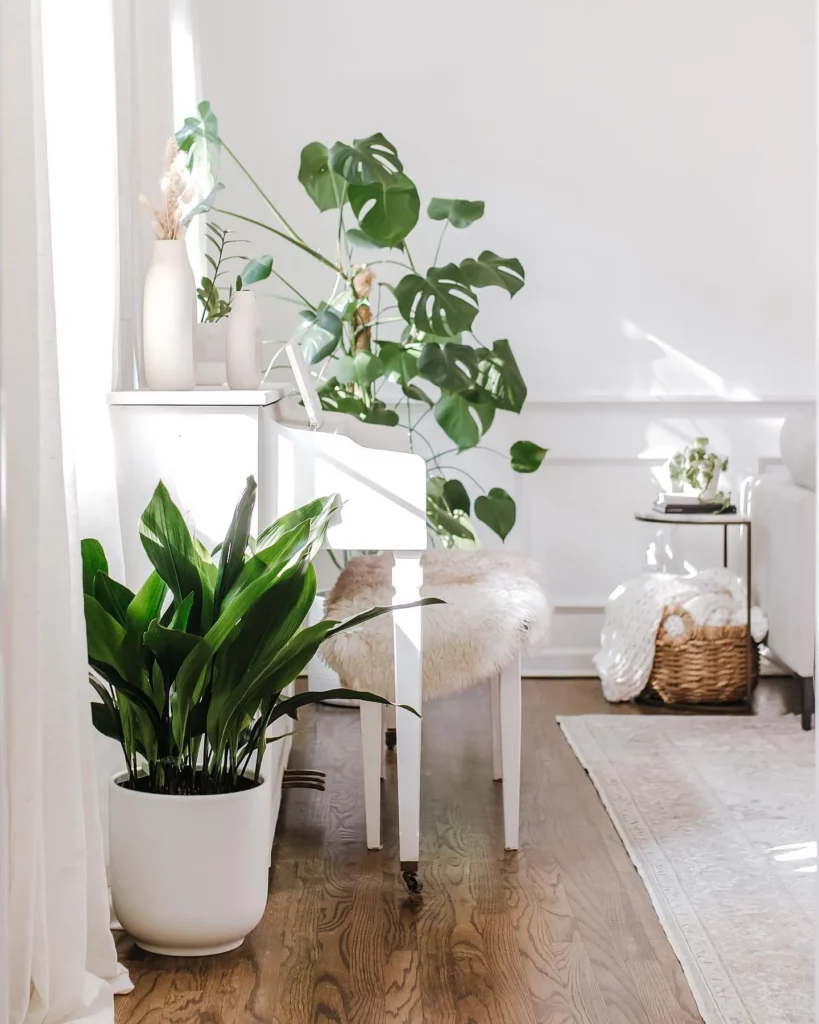
Proper watering is essential for the health of your cast iron plants. Failure to provide adequate water can lead to underwatering or overwatering, both of which can harm the plant’s vitality.
By being able to recognize the signs of these conditions, you can adjust your watering routine accordingly and ensure the optimal growth of your cast iron plants.
Signs of Underwatering
- Wilting leaves: One of the most obvious signs of underwatering in cast iron plants is wilting leaves. If you notice the leaves drooping or appearing limp, it may be an indication that the plant lacks sufficient water.
- Dry soil: Check the soil moisture level by inserting your finger about an inch deep into the soil. If the soil feels dry to the touch, it’s likely that the plant needs to be watered.
- Yellowing leaves: Underwatering can cause the leaves of cast iron plants to turn yellow. If you notice a yellowing of the lower leaves, it’s a warning sign that the plant is not receiving enough water.
Signs of Overwatering
- Root rot: Overwatering can lead to root rot in cast iron plants, resulting in the roots becoming mushy and discolored. If you notice a foul smell or the roots appear brown or black, it’s a sign of overwatering.
- Yellowing and wilting leaves: Similar to underwatering, overwatering can also cause the leaves to turn yellow and wilt. However, in this case, the leaves may feel soft and mushy to the touch.
- Mold or fungus: Excessive moisture can create a favorable environment for mold or fungus growth in the soil. If you notice a white or greenish film on the soil surface or a musty smell, it indicates overwatering.
Adjusting Watering Frequency Throughout the Seasons
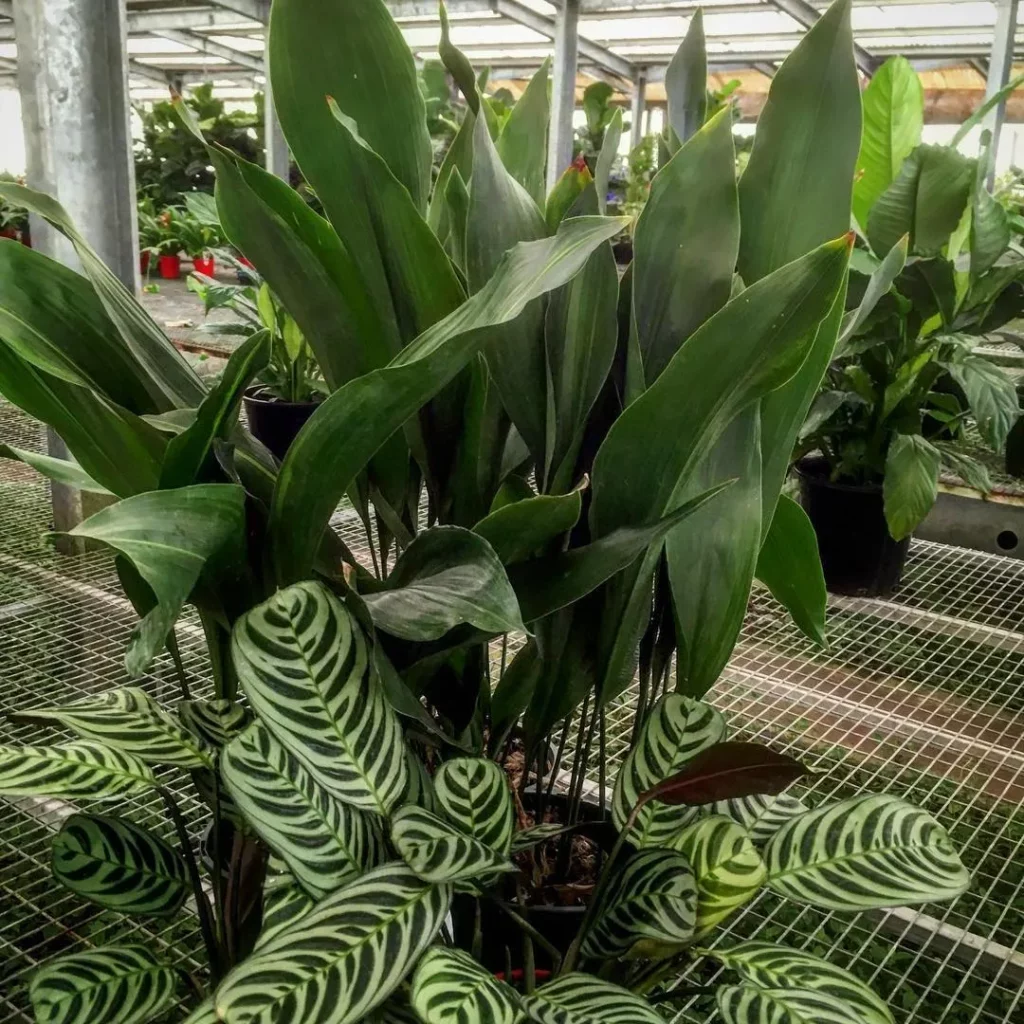
As a cast iron plant owner, it’s essential to adapt your watering schedule to meet the changing needs of your plant throughout the seasons.
Understanding and adjusting the watering frequency based on seasonal variations will help ensure the optimal health and growth of your cast iron plant.
Temperature, humidity, and light levels are crucial factors to consider when determining the watering requirements of your cast iron plant. These elements directly impact the rate at which your plant absorbs and evaporates moisture.
Spring:
In the spring, as temperatures rise and daylight hours increase, your cast iron plant’s growth will accelerate. During this period, it’s important to increase your watering frequency to support the plant’s increased metabolic activity.
Monitor the moisture levels in the soil and ensure it remains consistently moist.
Summer:
In the hot summer months, cast iron plants may need more frequent watering due to increased evaporation and higher temperatures. However, be cautious not to overwater, as excessive moisture can lead to root rot.
Aim for a balance by maintaining a moderately moist soil condition while allowing the top layer to dry slightly between waterings.
Fall:
As temperatures begin to cool down in the fall, your cast iron plant’s growth rate will slow. Adjust your watering frequency accordingly by reducing the amount of water you provide.
Allow the soil to dry out slightly more between waterings to prevent excess moisture retention, which can invite fungal diseases.
Winter:
In the winter, when cast iron plants enter a period of dormancy, their water requirements decrease significantly. Reduce your watering frequency and only provide water when the top inch of the soil feels dry.
Be cautious not to let the plant sit in overly damp conditions, as this can lead to root rot.
Additional Tips for Successful Cast Iron Plant Watering
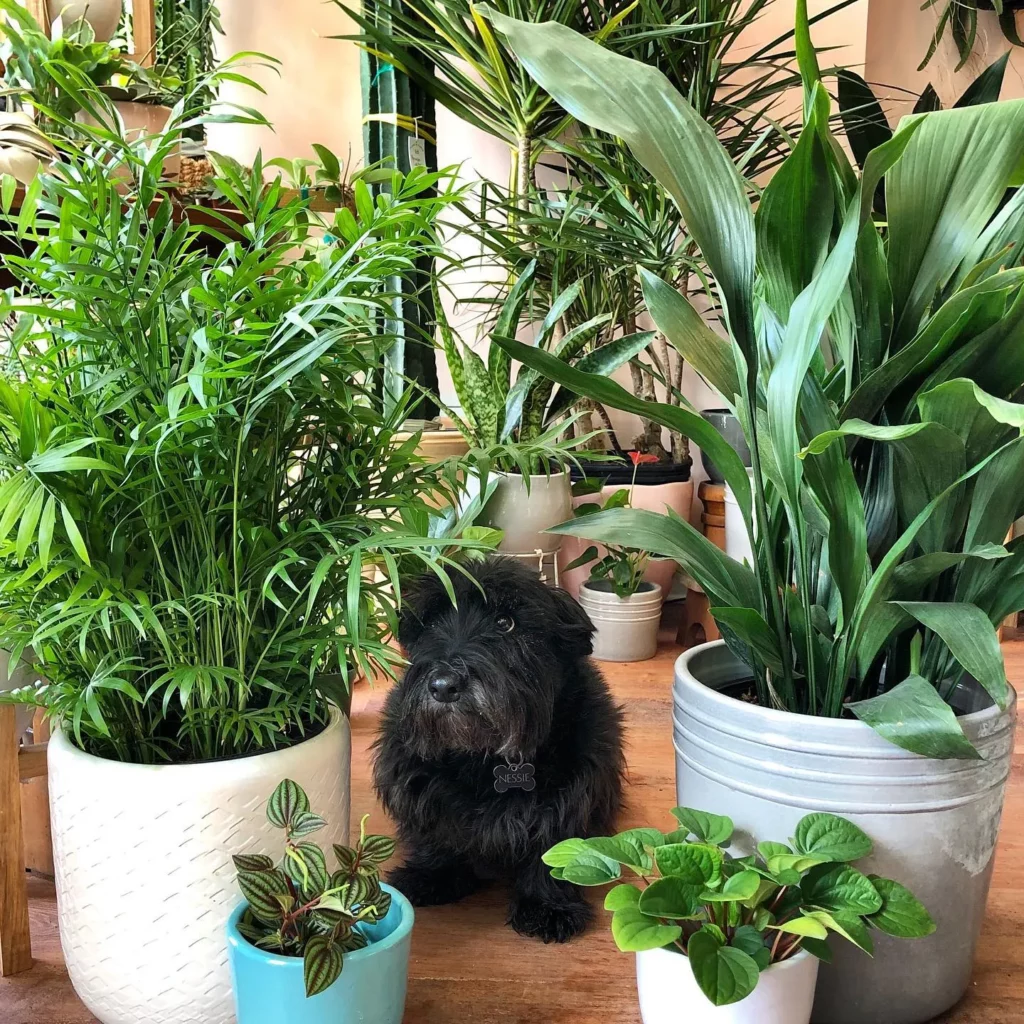
Watering your cast iron plant correctly is crucial for its overall health and vitality. In addition to the fundamental watering techniques, here are some additional tips and tricks to ensure successful watering:
- Use a watering can with a narrow spout or a hose nozzle with a gentle spray setting. This allows you to control the water flow and direct it accurately to the base of the plant, avoiding unnecessary splashing and runoff.
- Monitor the moisture levels of the soil regularly. Stick your finger about an inch into the soil to check for dryness. If it feels dry, it’s time to water.
- Avoid overwatering by allowing the top inch of soil to dry out between waterings. Cast iron plants are resilient and can tolerate some drought, but they don’t appreciate constantly wet feet.
- Consider using a self-watering system, such as a reservoir or a drip irrigation system. These systems provide a slow, consistent water supply to the plant’s root zone, ensuring it receives adequate hydration without the risk of overwatering.
- During hot summer months, mist the leaves of your cast iron plant occasionally to increase humidity. This mimics their natural habitat and helps prevent dryness and dehydration.
Troubleshooting Common Watering Issues for Cast Iron Plants
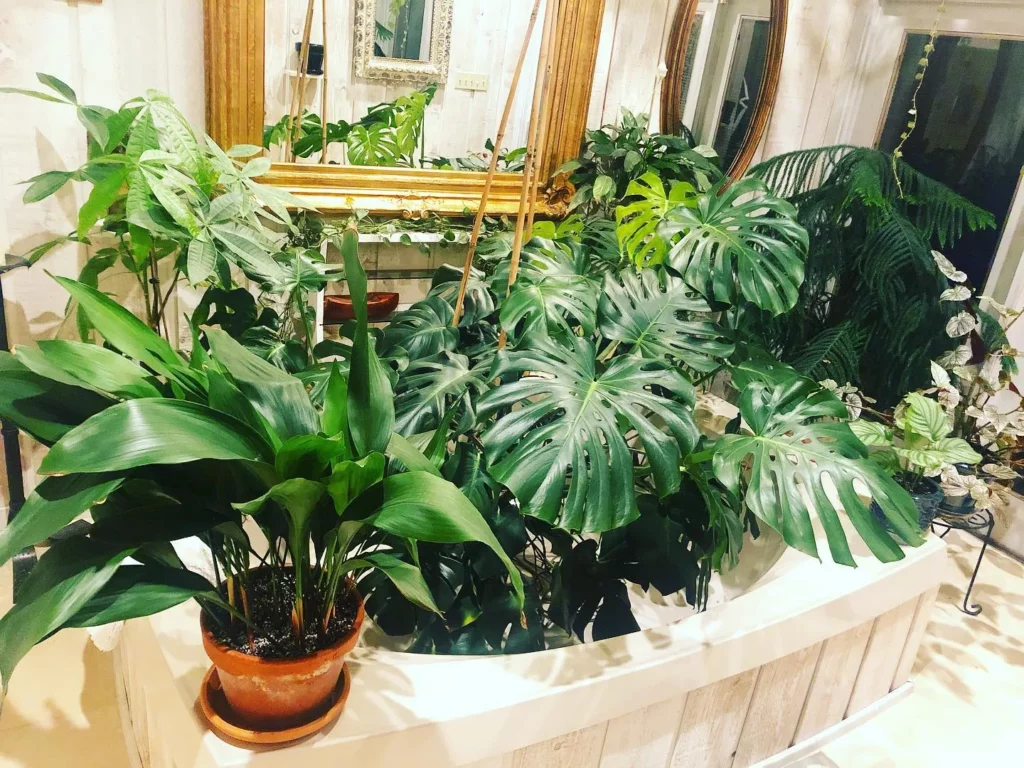
Sometimes, despite your best efforts, watering issues may arise. It’s important to identify and address these issues promptly to ensure the health and vitality of your cast iron plant.
In this section, I’ll discuss common watering problems that can affect cast iron plants, including yellowing leaves, root rot, and wilting. By understanding the causes and implementing appropriate solutions, you can get your plant back on track to thriving.
Yellowing Leaves
If you notice yellowing leaves on your cast iron plant, it’s a clear sign that something is amiss with its watering routine. Yellow leaves can be caused by both overwatering and underwatering. To troubleshoot this issue:
- Examine the soil moisture: Check the moisture level in the soil by inserting your finger about an inch deep. If it feels dry, your plant may be underwatered. If it feels excessively wet and the soil smells musty, it may be suffering from overwatering.
- Adjust watering frequency: Based on the soil moisture, adjust your watering frequency accordingly. If underwatering is the problem, increase the frequency of watering. If overwatering is the issue, reduce the frequency and allow the soil to dry out between waterings.
- Improve drainage: Ensure that your cast iron plant’s pot has proper drainage holes and that excess water can easily escape. Consider repotting the plant into a well-draining container.
Root Rot
Root rot is a serious issue that can occur when the roots of your cast iron plant are constantly exposed to excess moisture. To address root rot:
- Assess root health: Gently remove the plant from its pot and inspect the roots. Healthy roots should be firm and white. If you notice dark, mushy, or foul-smelling roots, they may be affected by root rot.
- Trim affected roots: Using clean scissors or pruners, carefully trim away any rotting or damaged roots.
- Improve drainage: Enhance the drainage capabilities of the soil by adding coarse materials like perlite or sand. This will help prevent water from pooling around the roots.
- Adjust watering practices: Allow the soil to dry out slightly between waterings to prevent the accumulation of excess moisture.
Wilting
Wilting is a common issue that can indicate both underwatering and overwatering. Here’s what you can do to troubleshoot wilting:
- Check soil moisture: Determine if the soil is excessively dry or waterlogged. Adjust your watering routine accordingly.
- Provide proper hydration: If your cast iron plant is underwatered, thoroughly water it until excess water drains from the pot’s drainage holes. If it is overwatered, allow the soil to dry out slightly before watering again.
- Consider environmental factors: Assess the plant’s surroundings for factors that may contribute to wilting, such as extreme temperatures or excessive exposure to direct sunlight.
Maintaining Overall Care for Your Cast Iron Plant
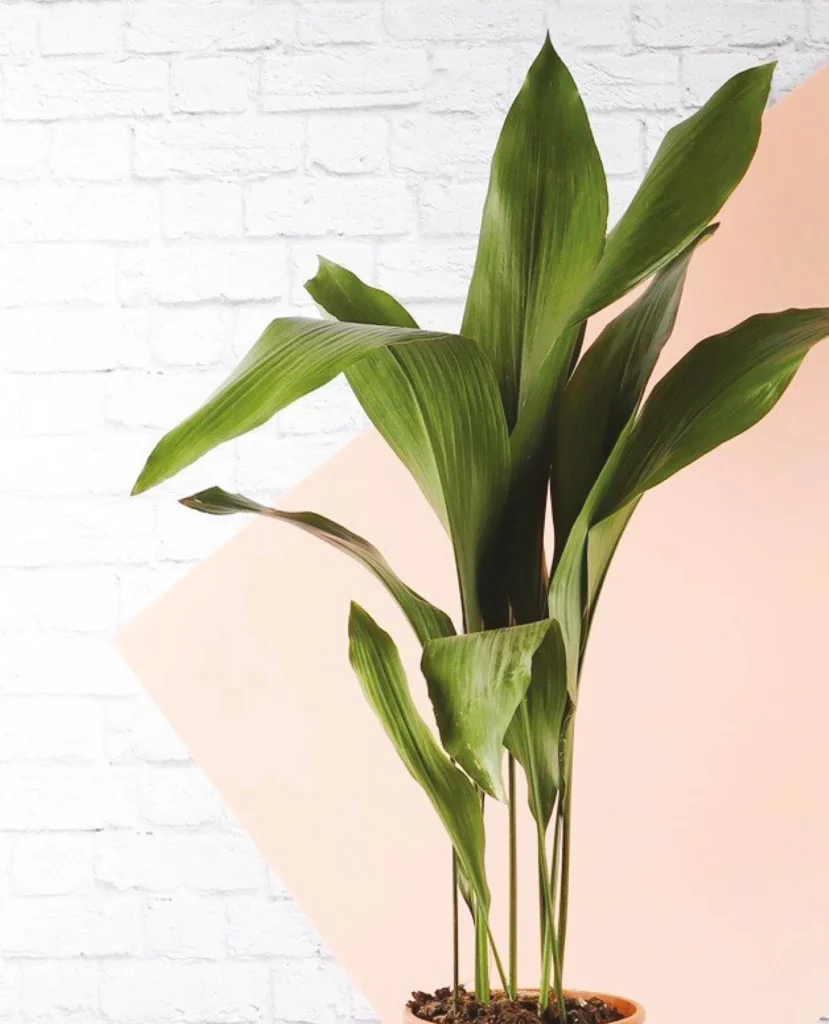
While proper watering techniques are essential for the health of your cast iron plant, it’s also important to consider its overall care requirements.
By addressing other key aspects of maintenance, such as light exposure, temperature preferences, and fertilization, you can ensure that your plant thrives in its environment.
First, let’s talk about light needs. Cast iron plants prefer bright, indirect light, making them ideal for areas that receive filtered sunlight. Avoid placing them in direct sunlight, as this can scorch their leaves.
If your plant is not receiving enough light, you may notice a lack of growth or pale leaves. On the other hand, if it is exposed to too much light, the leaves may become yellow or burned.
Next, consider the temperature preferences of your cast iron plant. These plants are known for their ability to withstand various temperature ranges, but they thrive in temperatures between 60°F and 75°F (15°C and 24°C).
Avoid placing them in areas with extreme temperature fluctuations, such as near drafts or heating vents. If the temperature drops below 50°F (10°C), your plant may experience growth slowdown or damage.
Lastly, fertilization is an important part of overall care for your cast iron plant. During the growing season, which typically spans from spring to summer, feed your plant with a balanced, water-soluble fertilizer every two to four weeks.
Use a dilute solution to prevent overfertilization, which can lead to salt buildup in the soil. In contrast, reduce or completely stop fertilizing during the plant’s dormant phase in fall and winter.





